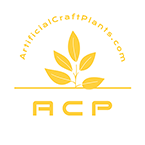Trendy interiors and landscape designs demand fresh, cutting-edge aesthetics. Yet, many businesses still stock outdated artificial plant styles that fail to meet modern consumer expectations. This stagnation leads to missed sales opportunities and reduced competitiveness.
Staying ahead in the artificial plant industry requires embracing innovation—lifelike textures, sustainable materials, and adaptable designs. Modern artificial plants now mimic nature more convincingly than ever, blending seamlessly into high-end interiors, commercial spaces, and luxury landscapes.
So, how can wholesalers, retailers, and designers elevate their artificial plant offerings to captivate today’s market? Let’s explore the latest trends1 and game-changing designs that redefine artificial greenery.
The Evolution of Artificial Plant Design
Artificial plants have come a long way from their glossy, plastic-looking ancestors. With advances in materials and design techniques, modern artificial greenery boasts hyper-realistic details, soft-touch textures, and flexible customization options. Learn about this evolution2 to understand how these advancements have transformed the industry.
Key Innovations in Artificial Plant Design
- Realistic Foliage & Textures: Soft-touch PU, silk, and latex leaves create a lifelike feel.
- Sustainable & Eco-Friendly Materials: Recyclable plastics, biodegradable components, and eco-conscious production methods.
- Customizable Designs: Modular arrangements, UV-resistant coatings for outdoor use, and fire-retardant options for commercial spaces.
- Smart Integration: AI-enhanced foliage that adjusts to light conditions, air-purifying artificial plants, and scent-infused leaves for sensory appeal.
Why It Matters for B2B Buyers
Wholesalers and retailers must differentiate themselves with fresh, high-quality designs. Outdated styles result in lower sales, while modern, trend-driven artificial plants attract high-end clientele, designers, and commercial projects. Understand why this matters3 for staying competitive in the market.
Trendsetting Artificial Plant Designs for 2025
Staying ahead of trends is crucial for business growth. Here are the artificial plant styles gaining traction worldwide, with insights to explore these designs4:
1. Hyper-Realistic Large-Scale Trees
Problem: Basic, unrealistic artificial trees look cheap and unconvincing.
Agitation: High-end commercial spaces demand ultra-realistic greenery for aesthetic appeal.
Solution: Life-sized artificial trees with natural wood trunks and hyper-detailed leaves offer a luxurious, maintenance-free alternative.
Hyper-realistic artificial trees feature real bark textures, multi-tonal leaves, and handcrafted details that mimic nature perfectly. These statement pieces enhance hotel lobbies, corporate spaces, and high-end retail environments.
2. Vertical Garden Panels & Green Walls
Problem: Traditional artificial plants occupy space without offering multifunctional benefits.
Agitation: Architects and interior designers seek innovative green solutions for small spaces.
Solution: Artificial green walls provide a lush, maintenance-free vertical garden effect, ideal for commercial settings.
Benefits of Artificial Green Walls:
- Space-saving, ideal for urban interiors.
- UV-resistant and weatherproof for indoor & outdoor use.
- Sound-absorbing properties improve acoustics in office environments.
- Easy installation with modular panel systems.
3. Biophilic-Inspired Artificial Plant Mixes
Problem: Single-species artificial plants lack the diversity of natural landscapes.
Agitation: Consumers and businesses want natural-looking greenery that mimics organic growth.
Solution: Mixed artificial plant designs featuring varied textures, colors, and species enhance realism.
Biophilic-inspired artificial plant designs combine ferns, vines, moss, and tropical foliage to create immersive green environments that feel alive.
4. Smart & Interactive Artificial Plants
Problem: Traditional artificial plants are static and lack interactive elements.
Agitation: Tech-integrated spaces require innovative decor solutions.
Solution: AI-powered artificial plants that change appearance based on lighting, movement, or temperature.
Examples of Smart Artificial Plant Features:
- Light-Adaptive Foliage: Leaves that adjust in color or vibrancy based on surrounding light.
- Aroma-Infused Plants: Artificial greenery with subtle botanical fragrances for sensory appeal.
- Integrated Air Purification: Artificial plants embedded with carbon filters for cleaner indoor air.
5. Customizable & Modular Plant Designs
Problem: Standardized artificial plants limit creative applications.
Agitation: Businesses need flexible solutions for diverse projects and spaces.
Solution: Modular artificial plant systems allow customization to fit any space or theme.
From modular potted arrangements to expandable green walls, customization is the future of artificial plant design. B2B buyers can mix and match elements to create unique setups tailored to their clientele.
Common Misconceptions About Modern Artificial Plants
Clarify these misconceptions5 to better understand the industry:
"Artificial plants always look fake."
Not anymore! Advanced materials and hand-crafted details make modern artificial plants nearly indistinguishable from real ones.
"They are bad for the environment."
Sustainable artificial plants use recyclable and biodegradable materials, reducing environmental impact while offering longevity.
"They don’t require any maintenance."
While artificial plants don’t need watering or sunlight, occasional cleaning ensures they maintain their vibrant appearance.
Conclusion
The artificial plant industry is rapidly evolving, and businesses must keep pace with innovation. By embracing hyper-realistic textures, biophilic designs, and smart plant technology, B2B buyers can unlock new market opportunities and drive higher sales. The future of artificial greenery is here—are you ready to grow with it?
-
Explanation: This link discusses 2025 trends in artificial plants, aligning with the article’s focus on innovative designs for commercial spaces. ↩
-
Explanation: This link provides a historical overview of artificial plants, detailing their evolution from ancient times to modern hyper-realistic designs. ↩
-
Explanation: This link highlights the benefits of artificial plants in retail, supporting the importance for B2B buyers’ competitiveness. ↩
-
Explanation: This link showcases artificial plant solutions like large trees and green walls, reinforcing the article’s trendsetting designs. ↩
-
Explanation: This link addresses myths about artificial plants, providing evidence on realism, sustainability, and maintenance. ↩

Hello everyone, I'm Li!By day, I'm a seasoned expert in the artificial plant industry, starting from the factory floor and working my way up to running my own successful business. In my free time, I’m passionate about running and often join trail runs with friends.Here to share what I've learned—let's grow together!






